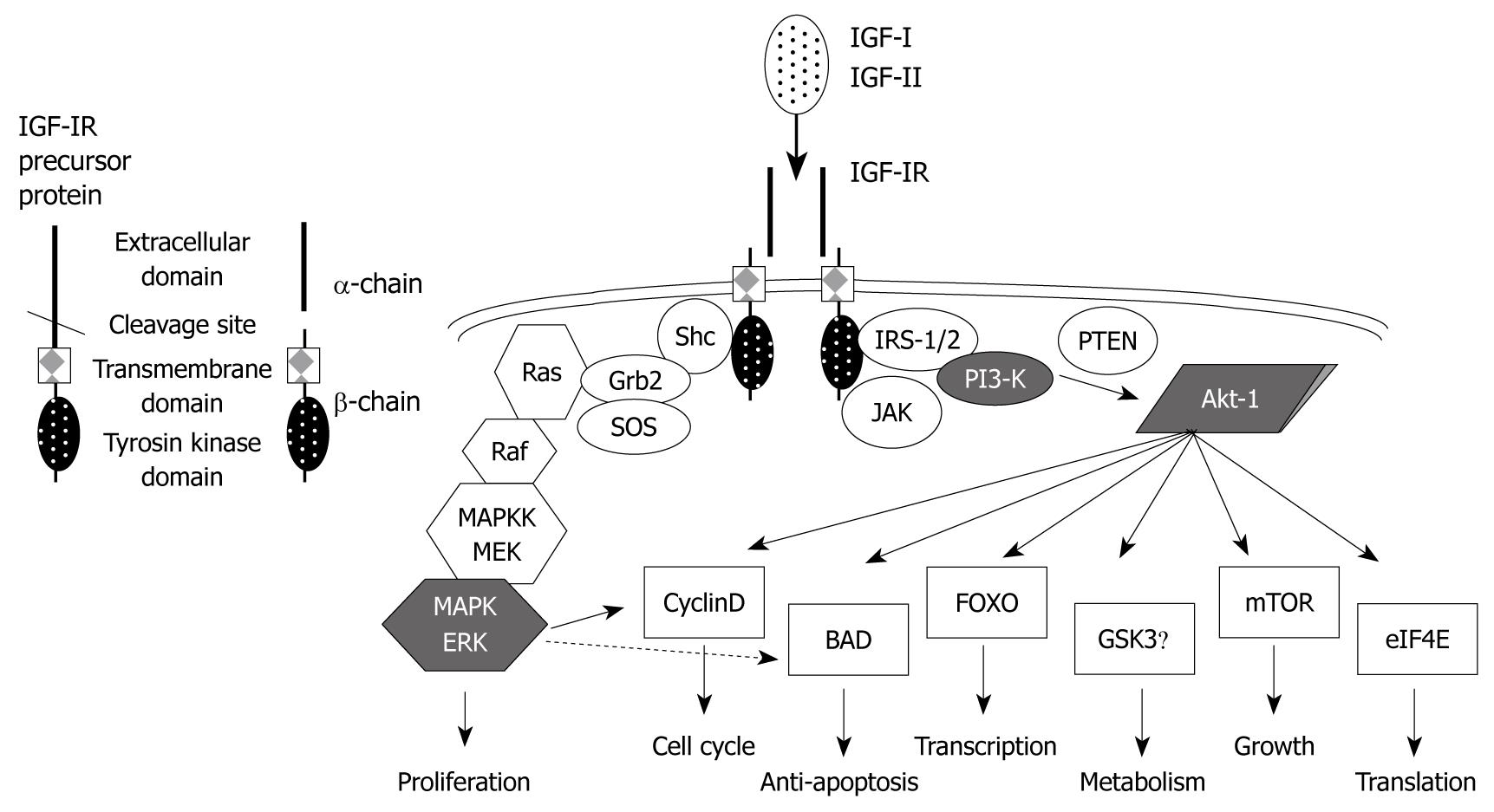Copyright
©2010 Baishideng Publishing Group Co.
World J Gastroenterol. Dec 14, 2010; 16(46): 5779-5789
Published online Dec 14, 2010. doi: 10.3748/wjg.v16.i46.5779
Published online Dec 14, 2010. doi: 10.3748/wjg.v16.i46.5779
Figure 1 The structure, signal transductions, and effects of the type I insulin-like growth factor receptor system.
Type I insulin-like growth factor receptor (IGF-IR) is synthesized as a single precursor peptide and then is cleaved into the α-subunit (extracellular domain) and the β-subunit (transmembrane and tyrosine kinase domains). After binding to the ligands (IGF-I and IGF-II), IGF-IR, which is constructed with two α- and two β-chains, turns on its signal transductions via two major pathways, such as mitogen-activated protein kinase (MAPK) and phosphatidylinositide 3-kinase (PI3-K)/Akt, results in survival and mitogenesis. IRS: Insulin receptor substrate; Shc: Src homology and collagen-containing protein; Grb2: Growth factor receptor-bound protein 2; PTEN: Phosphatase and tensin homolog; JAK: Janus kinase; MAPKK: MAPK kinase; MEK: MAPK/ERK kinase; ERK: Extracellular signal-regulated kinase; BAD: Bcl-2-associated death promoter; FOXO: Forkhead box O; GSK3β: Glycogen synthase kinase 3 beta; eIF4E: Eukaryotic translation initiation factor 4E.
- Citation: Adachi Y, Yamamoto H, Ohashi H, Endo T, Carbone DP, Imai K, Shinomura Y. A candidate targeting molecule of insulin-like growth factor-I receptor for gastrointestinal cancers. World J Gastroenterol 2010; 16(46): 5779-5789
- URL: https://www.wjgnet.com/1007-9327/full/v16/i46/5779.htm
- DOI: https://dx.doi.org/10.3748/wjg.v16.i46.5779









